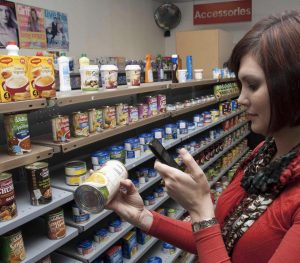Four reasons to move your merchandiser training online
No doubt quality merchandiser performance is a key focus of your company. If you haven’t already, this is the year to give it a boost by moving your...
3 min read
AJ Sallis
:
May 23, 2015 3:12:16 PM

Digital literacy is no longer a nice to have but an essential life skill. Computers have been commonplace for 30 years and the Internet for 20 years. They are used in all areas of life from business to leisure and I'm betting they're here to stay.
The FMCG sector has been fairly quick to adopt technology in manufacturing and back office processes to drive efficiencies but many companies still operate at the coalface like it's the dark ages.
There are still a lot of merchandisers who are clearly not digitally literate. Many merchandisers don’t have a smartphone (maybe understandable) and a small but determined percentage don’t even have an email address (basically inexcusable). While in the past an argument could be made that merchandisers are primarily responsible for shelf filling and had no real use for technology, nowadays many companies need and expect more from their merchandisers. After all they are responsible for ensuring that the customer experience in-store with a product is a good one. Beyond that, changes to New Zealand's ACC legislation and a global focus on health and safety means merchandisers have a responsibility for looking after themselves and potential customers as they interact with the products in-store.

For the last 7 years the Food and Grocery Council's Safe-In-Store-Pass (SISP) supplied by Intuto has provided online training in health and safety and food handling. This has helped lift health and safety awareness among merchandisers and other in-store operators while also having a positive impact on the digital literacy of the industry. There is also no doubt that sector wide adoption of the SISP has improved the efficiency of the sector and saved the sector upwards of $6,000,000 in travel and time related costs. Just as importantly, the transparency of the system gives the sector has a good grasp of how well people understand the material. This is quiet an achievement and must be almost unique in the New Zealand private sector.
Having said all this, the SISP shouldn't be the be all and end all of digital engagement in the sector. A large number of companies particularly in the small to medium size, but also a some bigger ones, still rely heavily on paper based and face-to-face communication with their merchandiser and sales staff.
Some of this is the result of merchandiser staff not having the right tools to engage digitally and a reluctance from companies to invest in smartphones and tablets for merchandiser staff. Some companies which can't afford the expense of equipping staff, especially part-timers, are offering other contributions like top up data cards and money towards smart phones. Then again other companies are just demanding it of their employees.
Once equipped with smart phones a whole world of productivity applications becomes available to them to make them more efficient way beyond the obvious tools like email. Let's explore two examples.
The first is inStore. inStore is a simple to use smartphone app that automates the collection of activity logs for merchandisers, contractors and other visitors to retail outlets. The system also automates the collection of Health and Safety incident reports, a crucial component of Health and Safety regulations and improving the safety of your staff. This can work in conjunction with the SISP ID providing a link from one system to another. The web based administration portal provides managers with reports detailing travel time and time in store as well as the aforementioned H&S incident reporting.

The second example is an online communication and training application Intuto. Intuto lets managers quickly create bite-sized online training and share it with staff in the field while reporting back whether they have read and understood it. This could be anything from product information, display set ups, specials, pricing, recalls, Health and safety reminders, policy updates or any information that you feel they need to know. This is then available for merchandisers and sales reps at their fingertips for them to access in store, in transit or at home.
There are countless other useful applications that you can encourage staff to install and access to make them more efficient in their roles which will all have the benefit of reducing your risk and increasing your returns.
In 2015 digital literacy is not just a nice-to-have skill, it's essential to driving business efficiency at all levels of the business from the warehouse, to storefront to boardroom. The only companies that can afford to ignore these changes are the ones that will be left behind by their competitors.

No doubt quality merchandiser performance is a key focus of your company. If you haven’t already, this is the year to give it a boost by moving your...

Organising an event of any size is a challenge, and can be extremely stressful. There are a thousand things to think about: not least of which is...

With the recent changes in the Health and Safety at Work Act getting a bit of news lately, we thought we should take a good look at the implications...